Explore web search results related to this domain and discover relevant information.

It is a method to send messages from one computer to another computer through the Internet. It is mostly used in business, education, technical communication, and document interactions. It allows communicating with people all over the world without bothering them. In 1971, a test email was sent ...
It is a method to send messages from one computer to another computer through the Internet. It is mostly used in business, education, technical communication, and document interactions. It allows communicating with people all over the world without bothering them. In 1971, a test email was sent Ray Tomlinson to himself containing text.The early emails were only sent to the same computer. Email services were started in 1971 by Ray Tomlinson. He first developed a system to send mail between users on different hosts across the ARPANET, using @ sign with the destination server, and was recognized as email.Your All-in-One Learning Portal: GeeksforGeeks is a comprehensive educational platform that empowers learners across domains-spanning computer science and programming, school education, upskilling, commerce, software tools, competitive exams, and more.An email is a communication that happens in real time and can get important data across to people in various geographies. An email is a record of the communications that have happened and is stored on the server of the organization.
Electronic mail (usually shortened to email; alternatively hyphenated e-mail) is a method of transmitting and receiving digital messages using electronic devices over a computer network. It was conceived in the late–20th century as the digital version of, or counterpart to, mail (hence e- + mail).
The original usage in June 1979 occurred in the journal Electronics in reference to the United States Postal Service initiative called E-COM, which was developed in the late 1970s and operated in the early 1980s. EMAIL was used by CompuServe starting in April 1981, which popularized the term.An Internet email consists of an envelope and content; the content consists of a header and a body. Computer-based messaging between users of the same system became possible after the advent of time-sharing in the early 1960s, with a notable implementation by MIT's CTSS project in 1965. Most developers of early mainframes and minicomputers developed similar, but generally incompatible, mail applications. In 1971 the first ARPANET network mail was sent, introducing the now-familiar address syntax with the '@' symbol designating the user's system address.DEC's ALL-IN-1 and Hewlett-Packard's HPMAIL (later HP DeskManager) were released in 1982; development work on the former began in the late 1970s and the latter became the world's largest selling email system. The Simple Mail Transfer Protocol (SMTP) was implemented on the ARPANET in 1983.Bob may pick up his email in many ways, for example logging into mx.b.org and reading it directly, or by using a webmail service. Domains usually have several mail exchange servers so that they can continue to accept mail even if the primary is not available. Many MTAs used to accept messages for any recipient on the Internet and do their best to deliver them. Such MTAs are called open mail relays. This was very important in the early days of the Internet when network connections were unreliable.
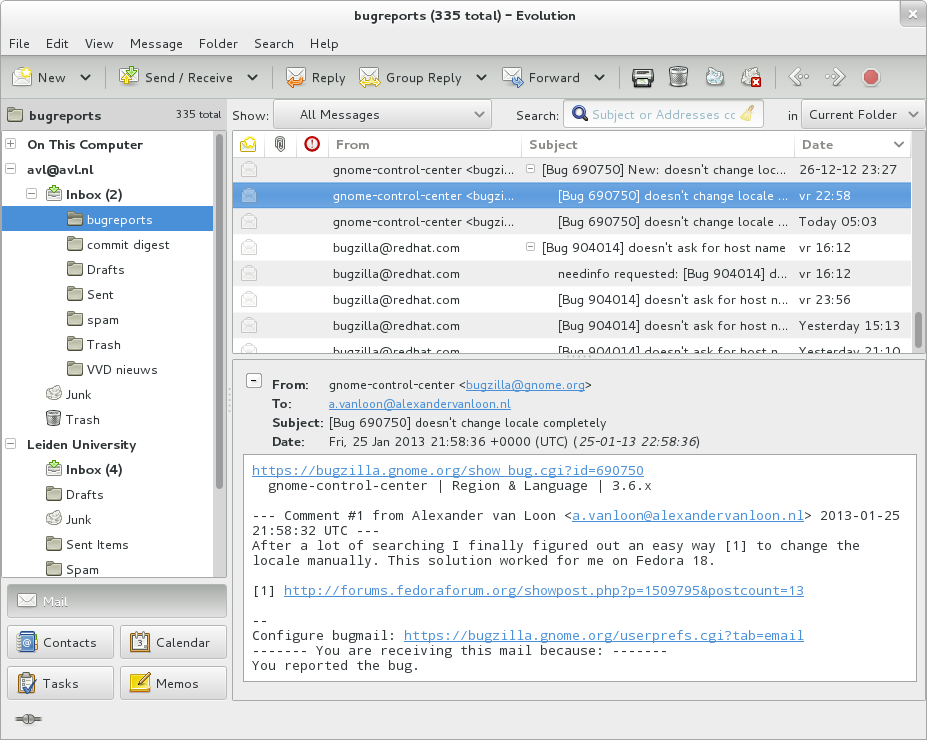
The purpose of a computer was to do massive computation, to augment our memories and empower our minds. Surely we didn’t need a computer, this behemoth of technology and innovation, just to talk to each other. The computers which sent (and received) the first email.
Messaging was first born in the time sharing era, when users wanted the ability to message other users of the same time shared computer. Unix machines have a command called write which can be used to send messages to other currently logged-in users. For example, if I want to ask Mark out to lunch: $ write mark write: mark is logged in more than once; writing to ttys002 Hi, wanna grab lunch? ... Message from [email protected] on ttys003 at 10:36 ...It was necessary to create a standard method of communication which every system could understand. Fortunately, this was also the goal of another similar protocol, FTP. FTP (the File Transfer Protocol) sought to create a single way by which different machines could transfer files over the ARPANET. FTP originally didn’t include support for email.From MAILER-DAEMON Fri Jul 8 12:08:34 2011 From: Author <[email protected]> To: Recipient <[email protected]> Subject: Sample message 1 This is the body. >From (should be escaped). There are 3 lines. It was technically possible to interact with your email by simply editing your mailbox file, but it was much more common to use an email client.RD was the first client to give us the ability to sort messages, save messages, and delete them. There was one key thing missing though: any integration between receiving a message and sending one. RD was strictly for consuming emails you had received, to reply to a message it was necessary to compose an entirely new message in SNDMSG or another tool.
Discover seven key reasons why email remains a top choice for internal communicators, driving engagement, efficiency, and seamless team collaboration.
According to data from more than 200 interviews with internal communicators, the top three most effective internal communication channels are internal email (72%), company and team meetings (49%), and meetings with direct managers (48%).Interestingly, research shows that employees can more easily process twenty half-page emails without feeling overwhelmed. When email is kept short and to the point—and the content is targeted to smaller, more specific audiences—employees remain engaged.Unlike Teams or Slack, which are well-suited for synchronous, real-time communication (where everyone is logged on and can respond before the message gets buried), email supports real-time and delayed communication more equally. So, while an email may still get buried, missed messages are easier to identify, find, and process.Whether an employee works in the office, at home, or outside the traditional office environment, every employee has (or should have) an email address, and the email goes with them and reaches them wherever they are.
P and F: +1-225-347-5408; Email: [email protected] World Aquaculture Society Home Page: www.was.org WORLD AQUACULTURE SOCIETY OFFICERS, 2023-24 Humberto Villarreal, President Jennifer Cobcroft Blair, Immediate Past President David Cline, President-Elect Reginald Blaylock, Treasurer Rumaitha Al ...
P and F: +1-225-347-5408; Email: [email protected] World Aquaculture Society Home Page: www.was.org WORLD AQUACULTURE SOCIETY OFFICERS, 2023-24 Humberto Villarreal, President Jennifer Cobcroft Blair, Immediate Past President David Cline, President-Elect Reginald Blaylock, Treasurer Rumaitha Al Busaidi, Secretary DIRECTORS Victoria Tarus Hillary Egna Angela Caporelli Etienne Hinrichsen Shivaun Leonard Yahira Piedrahita Marina M.Rubio Benito, Student Director CHAPTER REPRESENTATIVES Foluke Omotayo Areola, African Salin Krishna, Asian Pacific Ik Kyo Chung, Korean Francisco Javier Martínez Cordero, Latin America and Caribbean Abigail Bockus, USAS HOME OFFICE STAFF Judy Edwards Andrasko, Director, [email protected] Killian A. Haydel, Assistant Director, [email protected] WORLD AQUACULTURE EDITORIAL STAFF C. Greg Lutz, Editor-in-Chief Mary Nickum, Editor Cecilia C. Nichols, Editorial Assistant Linda Noble, Layout Editor WAS CONFERENCES AND SALES John Cooksey, Executive Director of Conferences and Sales World Aquaculture Conference Management P.O. Box 2302, Valley Center, CA 92082 P: +1-760-751-5005; F: +1-760-751-5003 Email: [email protected] MANUSCRIPTS AND CORRESPONDENCE Submit manuscripts as Microsoft Word files to C.WWW.WAS.ORG • WORLD AQUACULTURE • MARCH 2024 1 WORLD AQUACULTURE MAGAZINE WORLD AQUACULTURE magazine is published by the World Aquaculture Society. The home

Let's see if we can help you find what you are looking for:
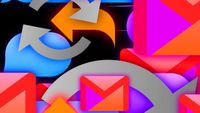
Cal Newport writes about the invention of e-mail and recent studies in the field of distributed systems which suggest that synchronous forms of communication, such as meetings, are more efficient.
Digital messaging was supposed to make our work lives easier and more efficient, but the math suggests that meetings might be better.From Renaissance workshops to the nineteenth-century rooms occupied by Charles Dickens’s Bob Cratchit and Herman Melville’s Bartleby, an office was usually a single space where a few people toiled. Though letter-writing—an asynchronous style of communication—had been a part of commerce for centuries, it was too slow for day-to-day collaboration.This status quo was upended by the rise of a new work setting: the large office. In the book “Cubed: A Secret History of the Workplace,” the critic and New Yorker contributor Nikil Saval writes that this shift took place between 1860, when the U.S.Census counted around seven hundred and fifty thousand people who worked in “professional service,” and 1920, by which time that number had increased to more than four million—a period, Saval writes, in which “business became big business.” The small counting house gave way to edifices such as the Larkin Building, designed in 1903, by Frank Lloyd Wright, which housed eighteen hundred employees, spread over five floors and a basement, and was anchored by a cavernous, light-bathed central atrium.
LACQUA25 will be the annual meeting of the WAS Latin American and Caribbean Chapter. Following the successful previous LACQUA meetings, LACQUA25 will be held for the first time in Chile.
If you are a California resident under age 18 and are a registered user of any of the Services, then you may request that we remove any Submissions that you publicly posted on or in the Services. To request removal of a Submission, please send an email with a detailed description of the specific ...
If you are a California resident under age 18 and are a registered user of any of the Services, then you may request that we remove any Submissions that you publicly posted on or in the Services. To request removal of a Submission, please send an email with a detailed description of the specific Submission to [email protected] a comment, leave feedback, or send us a photo - for example if you review one of the items in our online store we require that you provide your name and email address to make sure you are a real person and not a spam robot;
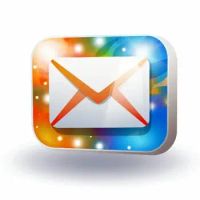
It's automatically filled by most email clients. To: This field indicates the primary recipient of the message. If the address is associated with a display name, it will show up in the field. Subject: This field provides a brief summary or description of the message's content. Date: This field shows the date and local time when the message was ...
It's automatically filled by most email clients. To: This field indicates the primary recipient of the message. If the address is associated with a display name, it will show up in the field. Subject: This field provides a brief summary or description of the message's content. Date: This field shows the date and local time when the message was composed.Email was invented in 1971 by Ray Tomlinson, who sent the first message from a computer on the ARPANET.Email is one of the most popular ways to communicate. Learn what it is, how an email header and clients work, and how to secure your account.Since its introduction, email has become one of the most popular methods of digital communication. It's projected that over 4.37 billion people worldwide will use email by 2026. You can easily communicate with anyone across the world at any time, as long as they have an email account.
In 2012, Tomlinson told his story of the invention of email to The Verge and said people ended up using it just as he envisioned: ARPANET was very young and looking for problems it could solve. I had an experimental file-transfer protocol, but the real one was still in the works.
I didn’t want to wait for that, so I wrote a simple little one for my own use, and glued that onto the SNDMSG program so I could send the mailbox file to another computer, where the receiver’s mailbox was. That was the first networked email in some sense.There is, however, some serious controversy over who really invented email. We’ll tell you more in a few years… · Queen Elizabeth II was the first head-of-state to use email. She tried out ARPANET’s electronic mail program during a visit to the Royal Signals and Radar Establishment in Malvern, England.Although, the former president steered clear of it later in life because he thought someone was spying on his conversations with foreign leaders. It didn’t take long for someone to find a way to use email to make money.He was promoting a new product for Digital Equipment Corporation. Thuerk claims the email earned $13 million in sales. That sounds like pretty good engagement and a strong conversion rate. And email still gets incredible ROI. So, you have to wonder…

Email is 40 years old. It's a firm fixture of life, loathed by some but essential to nearly all of us, yet its future is far from certain.
Like many technological innovations, email has its roots in military technology. In the late 1960s, MIT graduate Ray Tomlinson was working at research and development firm Bolt, Beranek and Newman. His work included contributing to technologies related to the ARPANET, the military communications network that was the earliest form of the Internet.His task was to allow messages to be sent between two different computers, and in October 1971 he cracked it. As Tomlinson told The Times in 2008, he doesn’t remember what that first email actually said – perhaps ‘QWERTY’ or another string of characters, but whatever it was, it traveled a distance of one meter between two separate computers.Back in 2001, the School of Information Management and Systems at UC Berkley reported that around 31 billion emails were sent daily. By 2008, that figure had risen to 170 billion each day, at a rate of 2 million per second. It hasn’t stopped accelerating; Pingdom reported that in 2010, the daily rate was 294 billion.One of the most popular strategies in recent years has been Merlin Mann’s Inbox Zero, a way to “reclaim your email, your attention, and your life. Even when email was a much smaller deal, co-founder of The Next Web, Boris Veldhuijzen van Zanten had a simple but effective routine for getting through over 500 customer support emails at V3, the startup he co-founded in the late 1990s.
P and F: +1-225-347-5408; Email: [email protected] World Aquaculture Society Home Page: www.was.org WORLD AQUACULTURE SOCIETY OFFICERS, 2024-25 David Cline, President Humberto Villareal, Immediate Past President Wendy Sealey, President-Elect Matt Parker, Treasurer Rumaitha Al Busaidi, Secretary ...
P and F: +1-225-347-5408; Email: [email protected] World Aquaculture Society Home Page: www.was.org WORLD AQUACULTURE SOCIETY OFFICERS, 2024-25 David Cline, President Humberto Villareal, Immediate Past President Wendy Sealey, President-Elect Matt Parker, Treasurer Rumaitha Al Busaidi, Secretary DIRECTORS Angela Caporelli Hillary Egna Shivaun Leonard Catriona Macleod Yahira Piedrahita Brian Small Bakare Mariam Oyinade, Student Director CHAPTER REPRESENTATIVES Foluke Omotayo Areola, African Bibha Kumari, Asian Pacific Han Kyu Lim, Korean Luis Andrés Gonzalez-Agraz, Latin America and Caribbean Michelle Walsh, USAS HOME OFFICE STAFF Judy Edwards Andrasko, Director, [email protected] Killian A.Haydel, Assistant Director, [email protected] WORLD AQUACULTURE EDITORIAL STAFF C. Greg Lutz, Editor-in-Chief Mary Nickum, Editor Cecilia C. Nichols, Editorial Assistant Linda Noble, Layout Editor WAS CONFERENCES AND SALES John Cooksey, Executive Director of Conferences and Sales World Aquaculture Conference Management P.O. Box 2302, Valley Center, CA 92082 P: +1-760-751-5005; F: +1-760-751-5003 Email: [email protected] MANUSCRIPTS AND CORRESPONDENCE Submit manuscripts as Microsoft Word files to C.Hatchery Equipment & Supplies PO Box 5, Hawthorne, California 90250 USA Tel: 310-973-5275 / Fax: 310-676-9387 If you wish to test our diets, please contact us for a sample. Red AlgaMac Rotifer & Artemia Enrichment. New www.aquafauna.com email: [email protected] (CONTINUED ON PAGE 10)Tilapia Aquaculture in Saudi Arabia: A New Start and New Practices VOLUME 56, NUMBER 1 THE MAGAZINE OF THE WORLD AQUACULTURE SOCIETY MARCH 2025 W RLD
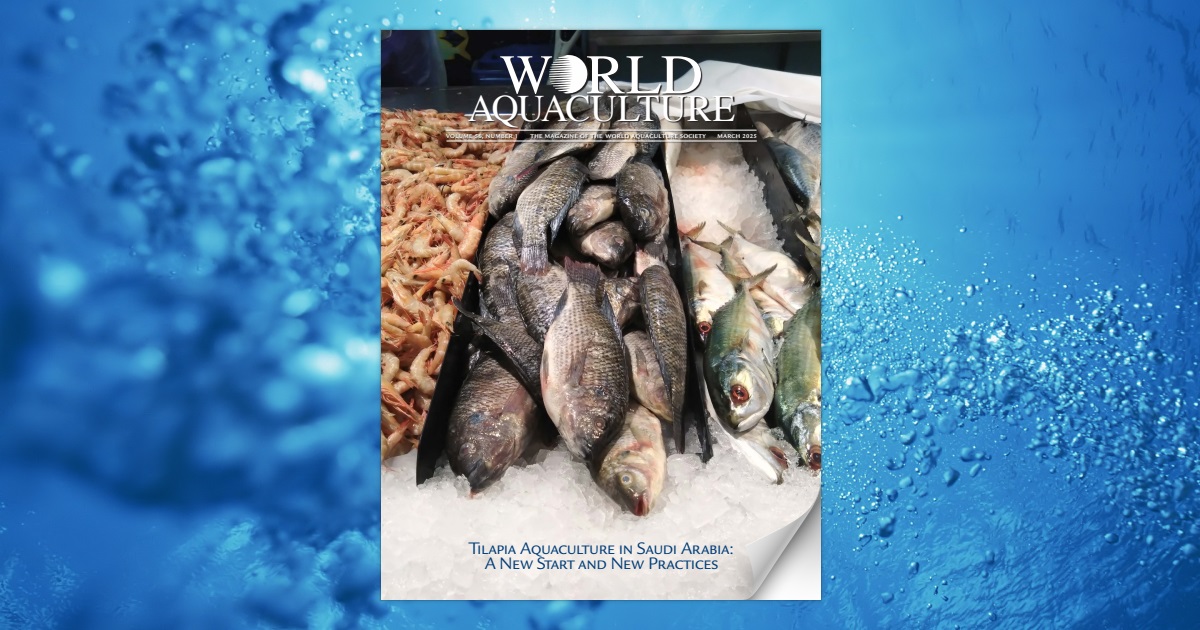
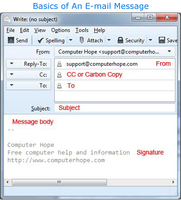
Short for electronic mail, e-mail or email is information stored on a computer that is exchanged between two users over telecommunications. More plainly, an e-mail is a message that may contain text, files, images, or other attachments sent through a network to a specified individual or group of individuals. The first e-mail was ...
Short for electronic mail, e-mail or email is information stored on a computer that is exchanged between two users over telecommunications. More plainly, an e-mail is a message that may contain text, files, images, or other attachments sent through a network to a specified individual or group of individuals. The first e-mail was sent by Ray Tomlinson in 1971.Finally, "computerhope.com" is the domain name where the user belongs. The ".com" is the TLD (Top-Level Domain) for our domain. The domain name is used to route the email to the correct destination server.The e-mail must not have two or more consecutive periods. Unless the first portion of the e-mail address is surround with quotes (e.g., "email..example"@computerhope.com).Both "e-mail" and "email" are valid words, and what you decide to use should be determined by the style guide you're following.
P and F: +1-225-347-5408; Email: [email protected] World Aquaculture Society Home Page: www.was.org WORLD AQUACULTURE SOCIETY OFFICERS, 2023-24 Humberto Villarreal, President Jennifer Cobcroft Blair, Immediate Past President David Cline, President-Elect Reginald Blaylock, Treasurer Rumaitha Al ...
P and F: +1-225-347-5408; Email: [email protected] World Aquaculture Society Home Page: www.was.org WORLD AQUACULTURE SOCIETY OFFICERS, 2023-24 Humberto Villarreal, President Jennifer Cobcroft Blair, Immediate Past President David Cline, President-Elect Reginald Blaylock, Treasurer Rumaitha Al Busaidi, Secretary DIRECTORS Victoria Tarus Hillary Egna Angela Caporelli Etienne Hinrichsen Shivaun Leonard Yahira Piedrahita Marina M.Rubio Benito, Student Director CHAPTER REPRESENTATIVES Foluke Omotayo Areola, African Salin Krishna, Asian Pacific Ik Kyo Chung, Korean Francisco Javier Martínez Cordero, Latin America and Caribbean Anita Kelly, USAS HOME OFFICE STAFF Judy Edwards Andrasko, Director, [email protected] Killian A. Haydel, Assistant Director, [email protected] WORLD AQUACULTURE EDITORIAL STAFF C. Greg Lutz, Editor-in-Chief Mary Nickum, Editor Linda Noble, Layout Editor WAS CONFERENCES AND SALES John Cooksey, Executive Director of Conferences and Sales World Aquaculture Conference Management P.O. Box 2302, Valley Center, CA 92082 P: +1-760-751-5005; F: +1-760-751-5003 Email: [email protected] MANUSCRIPTS AND CORRESPONDENCE Submit manuscripts as Microsoft Word files to Mary Nickum, Editor, World Aquaculture magazine.Email: [email protected] Letters to the Editor or other comments should be sent to the Editor-in-Chief, C. Greg Lutz at [email protected]. WORLD AQUACULTURE (ISSN 1041-5602), is published quarterly by the World Aquaculture Society, 6203 Jonathan Alaric Avenue, Gonzales, LA 70737 USA.WWW.WAS.ORG • WORLD AQUACULTURE • DECEMBER 2023 1 WORLD AQUACULTURE MAGAZINE WORLD AQUACULTURE magazine is published by the World Aquaculture Society. The home

P and F: +1-225-347-5408; Email: [email protected] World Aquaculture Society Home Page: www.was.org WORLD AQUACULTURE SOCIETY OFFICERS, 2024-25 David Cline, President Humberto Villareal, Immediate Past President Wendy Sealey, President-Elect Matt Parker, Treasurer Rumaitha Al Busaidi, Secretary ...
P and F: +1-225-347-5408; Email: [email protected] World Aquaculture Society Home Page: www.was.org WORLD AQUACULTURE SOCIETY OFFICERS, 2024-25 David Cline, President Humberto Villareal, Immediate Past President Wendy Sealey, President-Elect Matt Parker, Treasurer Rumaitha Al Busaidi, Secretary DIRECTORS Angela Caporelli Hillary Egna Shivaun Leonard Catriona Macleod Yahira Piedrahita Brian Small Bakare Mariam Oyinade, Student Director CHAPTER REPRESENTATIVES Foluke Omotayo Areola, African Bibha Kumari, Asian Pacific Ik Kyo Chung, Korean Francisco Javier Martínez Cordero, Latin America and Caribbean Abigail Bockus, USAS HOME OFFICE STAFF Judy Edwards Andrasko, Director, [email protected] Killian A.Haydel, Assistant Director, [email protected] WORLD AQUACULTURE EDITORIAL STAFF C. Greg Lutz, Editor-in-Chief Mary Nickum, Editor Cecilia C. Nichols, Editorial Assistant Linda Noble, Layout Editor WAS CONFERENCES AND SALES John Cooksey, Executive Director of Conferences and Sales World Aquaculture Conference Management P.O. Box 2302, Valley Center, CA 92082 P: +1-760-751-5005; F: +1-760-751-5003 Email: [email protected] MANUSCRIPTS AND CORRESPONDENCE Submit manuscripts as Microsoft Word files to C.WWW.WAS.ORG • WORLD AQUACULTURE • SEPTEMBER 2024 1 WORLD AQUACULTURE MAGAZINE WORLD AQUACULTURE magazine is published by the World Aquaculture Society. The home

Feeds animals according to species needs and program schedule and protocols Contribute to the development of experimental designs and study hypotheses. Collect, store, and process samples from study subjects or field sites. Be responsive via electronic notification (call/email), including possible ...
Feeds animals according to species needs and program schedule and protocols Contribute to the development of experimental designs and study hypotheses. Collect, store, and process samples from study subjects or field sites. Be responsive via electronic notification (call/email), including possible nights and weekends to address life support system failures.(AIS) https://jobs.rwfm.tamu.edu/view-job/?id=107794 Contact: If you would like to apply for this exciting new opening, please visit our Careers Page to submit the required information: Resume Cover letter detailing relevant experience. 3 professional references (name, email address and phone number) All documents must be submitted for your application to be considered.

Meetings can either be a powerful tool for collaboration or a drain of time and energy. The difference lies in how well they’re planned, directed, and justified. If you’ve ever sat in a meeting wondering, “Why wasn’t this just an email?” you’re not alone.
Try asynchronous updates or group emails for quick updates instead. If something truly needs to be addressed live, ensure there’s enough value-packed content to justify a meeting. Recurring meetings can easily lose their purpose and turn into rituals that waste your team’s time.Striking this balance not only improves communication efficiency but also minimizes those meetings that could be emails moments. Poorly planned or unnecessary meetings don’t just waste time—they can damage team dynamics and productivity in ways that ripple across your organization.For example, inviting too many people can create tension when participants feel their time is wasted. Similarly, a lack of accountability can lead to blame-shifting. These issues undermine team cohesion and can turn meetings vs email debates into bigger conflicts.A poorly run meeting is another meeting that could’ve been an email draining resources without delivering value. Bad meetings don’t just affect the present; they also create a ripple effect. Employees who feel their time was wasted are less likely to contribute in future meetings.

Email messages are usually encoded in American Standard Code for Information Interchange (ASCII) format. However, users can also send non-text files -- such as graphic images and sound files -- as file attachments. Email was one of the first activities performed over the internet and is still ...
Email messages are usually encoded in American Standard Code for Information Interchange (ASCII) format. However, users can also send non-text files -- such as graphic images and sound files -- as file attachments. Email was one of the first activities performed over the internet and is still the most popular use.Today, the term email is often used to include both browser-based electronic mail, such as Gmail and AOL Mail, and non-browser-based electronic mail accessed through an email client such as Microsoft Outlook for Office 365. However, in the past, email was defined as a non-browser program that required a dedicated email server with the client software installed on the computer.Sender (From). This field is the sender's email address. A display name can also be shown instead if it's associated with the email address. Most email clients fill out this field automatically. Date and time received (On). This field shows the local time and date when the message was composed.Microsoft Outlook is available as part of the Microsoft Office suite and offers both free and paid versions. Microsoft Outlook works across several operating systems and devices and provides features such as deleted email recovery and automatic email organization. Yahoo Mail was launched in 1997 and is one of the oldest webmail clients available.
P and F: +1-225-347-5408; Email: [email protected] World Aquaculture Society Home Page: www.was.org WORLD AQUACULTURE SOCIETY OFFICERS, 2023-24 Humberto Villarreal, President Jennifer Cobcroft Blair, Immediate Past President David Cline, President-Elect Reginald Blaylock, Treasurer Rumaitha Al ...
P and F: +1-225-347-5408; Email: [email protected] World Aquaculture Society Home Page: www.was.org WORLD AQUACULTURE SOCIETY OFFICERS, 2023-24 Humberto Villarreal, President Jennifer Cobcroft Blair, Immediate Past President David Cline, President-Elect Reginald Blaylock, Treasurer Rumaitha Al Busaidi, Secretary DIRECTORS Victoria Tarus Hillary Egna Angela Caporelli Etienne Hinrichsen Shivaun Leonard Yahira Piedrahita Marina M.Rubio Benito, Student Director CHAPTER REPRESENTATIVES Foluke Omotayo Areola, African Salin Krishna, Asian Pacific Ik Kyo Chung, Korean Francisco Javier Martínez Cordero, Latin America and Caribbean Abigail Bockus, USAS HOME OFFICE STAFF Judy Edwards Andrasko, Director, [email protected] Killian A. Haydel, Assistant Director, [email protected] WORLD AQUACULTURE EDITORIAL STAFF C. Greg Lutz, Editor-in-Chief Mary Nickum, Editor Cecilia C. Nichols, Editorial Assistant Linda Noble, Layout Editor WAS CONFERENCES AND SALES John Cooksey, Executive Director of Conferences and Sales World Aquaculture Conference Management P.O. Box 2302, Valley Center, CA 92082 P: +1-760-751-5005; F: +1-760-751-5003 Email: [email protected] MANUSCRIPTS AND CORRESPONDENCE Submit manuscripts as Microsoft Word files to C.WWW.WAS.ORG • WORLD AQUACULTURE • JUNE 2024 1 WORLD AQUACULTURE MAGAZINE WORLD AQUACULTURE magazine is published by the World Aquaculture Society. The home






